

| Aphodius Dung Beetles in Nottinghamshire |
| ... |
| Dung Beetle is a somewhat generalised term for those species making up the large and varied Scarabaeidae Family, that also includes Chafers. Among some of the Family's better known examples are the Dor Beetle (Geotrupes stercorarius) and the equally impressive Cockchafer (Melolontha melolontha). | ||
| .... | ||
| Whilst the Dor Beetle and
Cockchafer are both at the larger end of the Scarabaeidae
size-scale, Aphodius Dung Beetles are much
smaller and in many cases, much more colourful. As their common name implies, they generally frequent cattle and horse dung and where this is found, so too are Dung Beetles .... and very often by the thousands. They are common flyers and regularly seen taking to the air on the first warm days of Spring, or on similarly warm days in the Autumn. Most Aphodius beetles are quite difficult to identify to species level (particularly at first) but the medium that they are found in, is probably the most off-putting from many naturalists point of view. As disconcerting their choice of habitat might appear to be, it should be noted that Dung Beetles play a vitaly important role in assisting the decomposition of cattle and horse dung, perhaps reducing the actual decomposition time by 50%. |
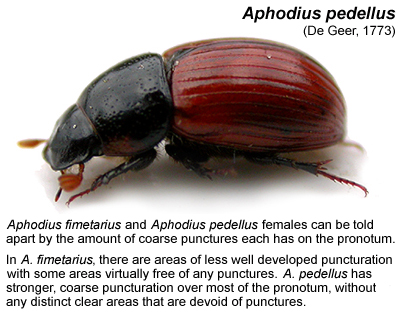 |
|
| .... | ||
| Aphodius
Dung Beetles in Nottinghamshire Studies have shown that different Aphodius species enter dung at different times or stages in decomposition. Our own casual observations suggest that the first to arrive, do so within minutes and can be seen flying in in numbers. At different times throughout the year, a variety of Aphodius species can be found in dung, so being aware of the flight period can give some indication towards identification and a specimen is ideally required in most instances. Nottinghamshire currently has a wide ranging list of the (typically) commoner Aphodius species, but there remains plenty of scope for several new additions, of which Labarrus lividus from a manure heap at Ollerton village in early 2021, is just such an example. Three nationally notable (Nb) Aphodius known to occur in Nottinghamshire are Chilothorax distinctus, Chilothorax paykulli and Sigorus porcus. Species shown with a red asterisk*, are believed known from historical records only. Recent changes to Aphodius nomenclature Aphodius nomenclature has recently undegone significant changes and the former Subgenera names have become the Genera. For instance Aphodius ater is now Agrilinus ater and Aphodius prodromus is now Melinopterus prodromus. How soon before someone comes along and reassigns them all back to Aphodius is anyone's guess. |
||
| APHODIIDAE Leach, 1815 |
| ACROSSUS Mulsant, 1842 |
| Acrossus depressus (Kugelann, 1792) |
| Acrossus luridus (Fabricius, 1775) |
| Acrossus rufipes (Linnaeus, 1758) |
| AGRILINUS Mulsant & Ray, 1870 |
| Agrilinus ater (De Geer, 1774) |
| Agrilinus constans (Duftschmid, 1805) * |
| Aphodius rufa (Moll, 1782) |
| APHODIUS Hellwig,178 |
| Aphodius fimetarius (Linnaeus, 1758) |
| Aphodius foetidus (Herbst, 1783) |
| Aphodius pedellus (De Geer, 1773) |
| BODILOPSIS Ádám, 1994 |
| Bodilopsis rufa (Moll, 1782) |
| CALAMOSTERNUS Motschulsky, 1860 |
| Calamosternus granarius (Linnaeus, 1767) |
| CHILOTHORAX Motschulsky, 1860 |
| Chilothorax distinctus (Müller, O.F., 1776) |
| Chilothorax paykulli (Bedel, 1907) |
| COLOBOPTERUS |
| Colobopterus erraticus (Linnaeus, 1758) * |
| Colobopterus subterraneus (Linnaeus, 1758) * |
| ESYMUS (Mulsant & Ray, 1869) |
| Esymus merdarius (Fabricius, 1775) * |
| Esymus pusillus (Herbst, 1789) |
| EUORODALUS Dellacasa, G., 1983 |
| Euorodalus coenosus (Panzer, 1798) |
| LABARRUS Mulsant & Ray, 1870 |
| Labarrus lividus (Olivier, 1789) |
| LIOTHORAX Motschulsky, 1859 |
| Liothorax plagiatus (Linnaeus, 1767) |
| MELINOPTERUS Mulsant, 1842 |
| Melinopterus prodromus (Brahm, 1790) |
| Melinopterus sphacelatus (Panzer, 1798) |
| NIMBUS Mulsant & Ray, 1870 |
| Nimbus contaminatus (Herbst, 1783) |
| OTOPHORUS Mulsant, 1842 |
| Otophorus haemorrhoidalis (Linnaeus, 1758) |
| PLANOLINUS (Mulsant & Ray, 1869) |
| Planolinus borealis (Gyllenhal, 1827) |
| RHODAPHODIUS Ádám, 1994 |
| Rhodaphodius foetens (Fabricius, 1787) |
| SIGORUS (Mulsant & Ray, 1869) |
| Sigorus porcus (Fabricius, 1792) * |
| TEUCHESTES Mulsant, 1842 |
| Teuchestes fossor (Linnaeus, 1758) |
| VOLINUS Mulsant & Ray, 1870 |
| Volinus sticticus (Panzer, 1798) |
| Agrilinus ater (De Geer, 1774) |
Nimbus
contaminatus (Herbst, 1783) |
|||
| Clipstone Old Quarter, April 2009. Length 6.00mm. | Budby South Forest, September 2008. Length 6.50mm. | |||
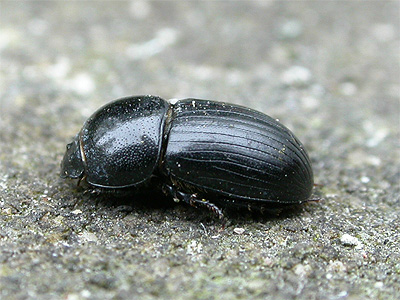 |
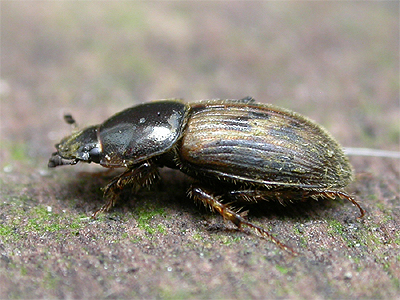 |
|||
| Acrossus
depressus
(Kugelann,
1792) |
Chilothorax
distinctus (Müller, O.F., 1776) |
|||
| Sherwood Forest CP, August 2008. Length 6.50mm. | Budby South Forest, September 2008. Length 4.50mm. | |||
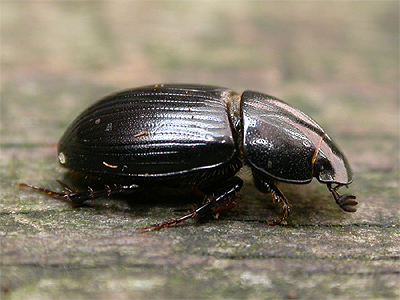 |
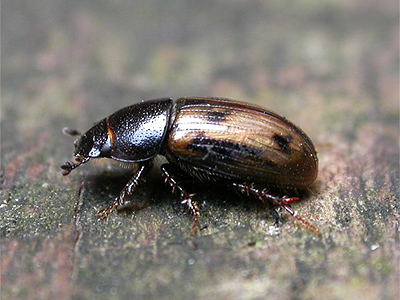 |
|||
| Rhodaphodius
foetens
(Fabricius,
1787) |
Aphodius
foetidus (Herbst, 1783) |
|||
| Clipstone Old Quarter, July 2008. Length 7.00mm. | Tug Bridge Farm, Eakring, September 2008. Length 5.00mm. | |||
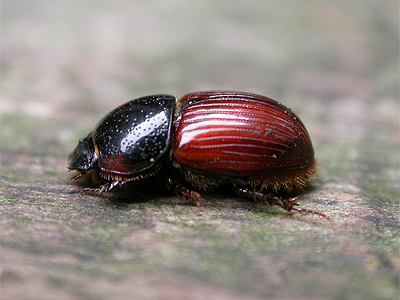 |
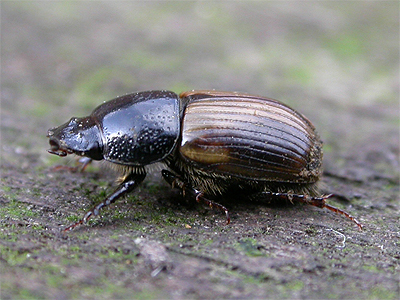 |
|||
| Teuchestes
fossor (Linnaeus, 1758) |
Calamosternus
granarius (Linnaeus, 1767) |
|||
| Eakring Meadows NR, August 2008. Length 12.00mm. | Tug Bridge Farm, near Eakring, April 2009. Length 4.00mm. | |||
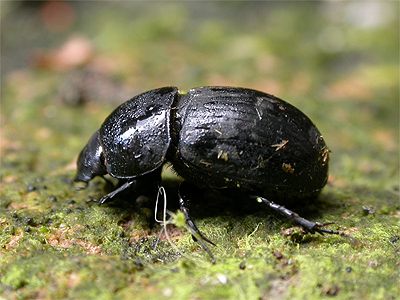 |
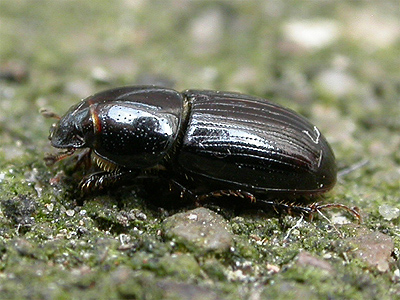 |
|||
| Otophorus
haemorrhoidalis (Linnaeus, 1758) |
Labarrus
lividus (Olivier, 1789) |
|||
| Sherwood Forest CP, May 2009. Length 4.00mm. | Ollerton village. Length 4.50mm. | |||
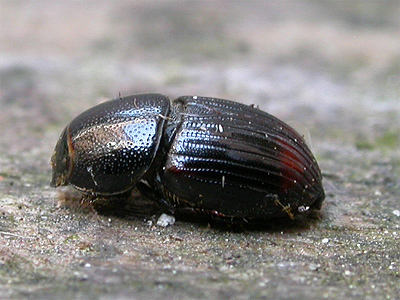 |
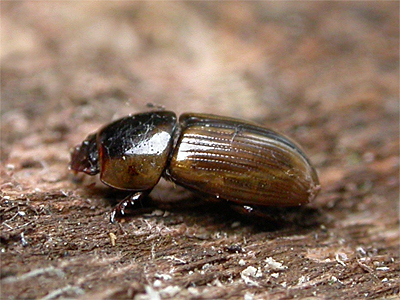 |
|||
| Acrossus
luridus (Fabricius, 1775) |
Chilothorax
paykulli (Bedel, 1907) |
|||
| Clipstone Old Quarter, April 2009. Length 8.00mm. | Budby South Forest, April 2013. Length 6.00mm. | |||
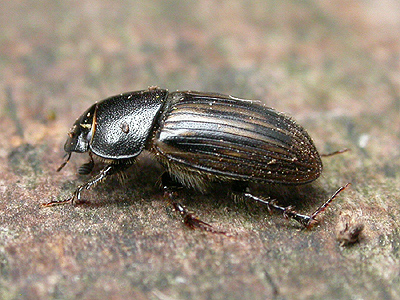 |
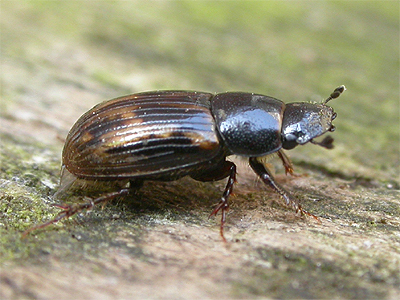 |
|||
Aphodius
pedellus (De Geer, 1773) |
Melinopterus
prodromus (Brahm, 1790) |
|||
| Tug Bridge Farm, Eakring, August 2008. Length 7.50mm. | Budby South Forest, September 2008. Length 6.00mm. | |||
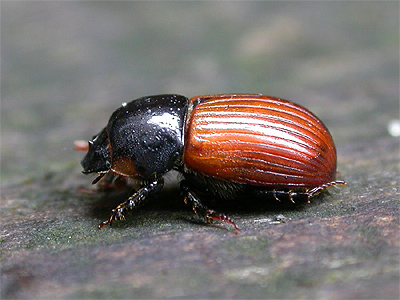 |
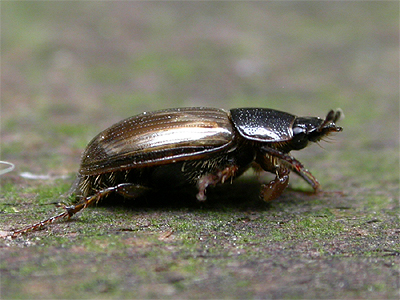 |
|||
|
Esymus pusillus
(Herbst, 1789) |
Acrossus
rufipes (Linnaeus, 1758) |
|||
| Hoveringham, March 2021. Length 4.00mm | Sherwood Forest CP, July 2008. Length 9.00mm. | |||
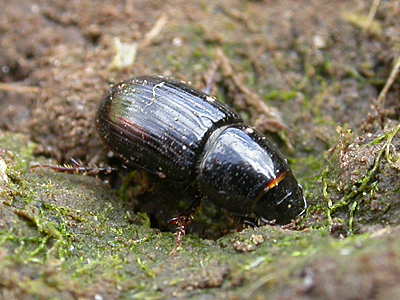 |
 |
|||
| Bodilopsis
rufa
(Moll,
1782) |
Volinus
sticticus
(Panzer,
1798) |
|||
| Sherwood Forest CP, July 2008. Length 5.00mm. | Clipstone Old Quarter May 2013. Length 5.00mm. | |||
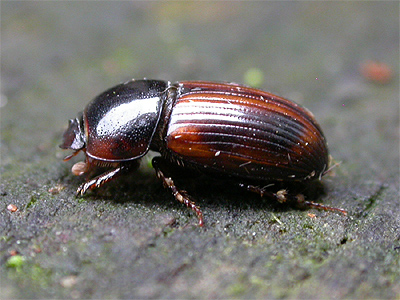 |
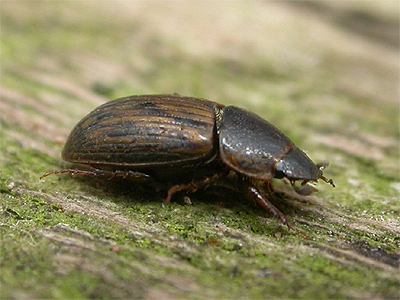 |
|||